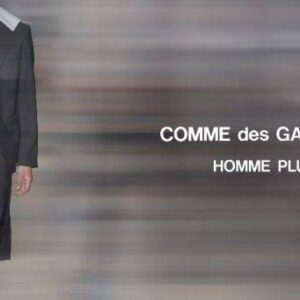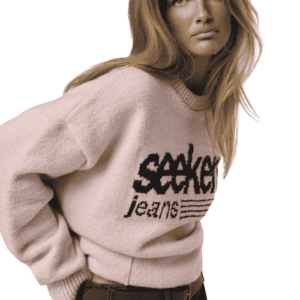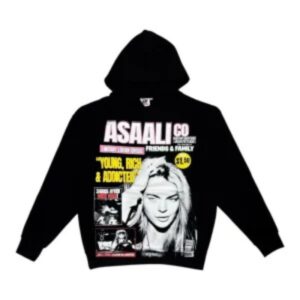In a world where fashion often leans into extravagance or fast-changing trends, Realism Clothing has carved a unique identity—one rooted in authenticity, self-expression, and the raw spirit of the streets. More than just apparel, Realism represents a lifestyle, a narrative, and a form of rebellion against mass-produced fashion with no soul. This is streetwear with a purpose—it’s fashion that talks back, questions norms, and stands firmly in truth.
The Birth of a Movement: Where Real Meets Raw
Realism Clothing didn’t emerge from corporate boardrooms or high fashion ateliers. Its roots are grounded in urban grit, everyday struggle, and the desire to create clothing that reflects reality—unfiltered, unapologetic, and unpolished. This brand is born from street culture, music, art, and the voices of those who demand to be seen and heard. It’s not about gloss; it’s about substance.
Where most fashion labels chase glossy campaigns and seasonal fads, Realism Clothing was built to reflect what’s real: the concrete beneath our feet, the graffiti on the walls, the unspoken language of style that exists in alleyways, skate parks, and underground clubs. Each piece is a canvas of lived experience. It speaks to those who reject artificial perfection in favor of something far more meaningful.
Design That Speaks Louder Than Words
What truly sets Realism apart is its design philosophy. Every hoodie, tee, or jacket tells a story — not through flashy branding, but through detail, symbolism, and energy. The graphics are bold but thought-provoking. Whether it’s distorted typography, abstract iconography, or gritty photography, Realism designs resonate because they’re rooted in the struggles and triumphs of real people.
Each piece is like a visual poem, meant to challenge the eye and stir the soul. There’s often a political undertone — a commentary on surveillance, identity, poverty, rebellion. But even when silent, the garments speak through their textures, stitching, and silhouettes. Oversized fits reflect a need for comfort in chaos. Washed-out dyes mirror the erosion of time. Torn hems and distressed fabrics remind us that beauty often lies in imperfection.
More Than Fashion: A Cultural Weapon
Realism Clothing is not simply a fashion brand. It’s a cultural weapon, a tool for self-definition in a world that constantly seeks to box people in. For those who wear it, it’s not about style points or Instagram likes. It’s about claiming space, expressing identity, and projecting confidence in a society that often marginalizes.
In many ways, Realism is fashion as protest. It carries the same spirit that drove punk, hip-hop, and skateboarding movements — subcultures that disrupted norms and built new ones. When someone wears a Realism hoodie, they’re not just keeping warm. They’re saying, “I see the world for what it is, and I’m still here, still standing.”
This brand doesn’t conform to traditional ideas of “high fashion” — and that’s the point. Its creators understood that there is power in speaking the language of the streets. Realism has managed to translate rawness into wearable identity, making it both accessible and deeply profound.
The Fabric of Reality: Quality with Intention
One of the most underrated aspects of Realism Clothing is its commitment to quality. While many streetwear brands focus solely on aesthetics, Realism understands that how something feels is just as important as how it looks. Every stitch, every seam, and every textile is chosen with care. Heavyweight cottons, custom-milled fabrics, and artisanal dyes reflect a slow, deliberate process — one that honors the craft of making clothing that lasts.
This approach isn’t just about durability. It’s about integrity. In a world of throwaway fashion and microtrends, Realism Clothing holds its ground as a label that values what’s timeless. The result is clothing that doesn’t just survive the seasons, but grows more personal with each wear — becoming a second skin for those who truly live in their garments.
From Underground to Global Recognition
Realism’s journey from street corners to cult status is nothing short of iconic. Without celebrity endorsements or flashy marketing, the brand has spread organically—from word-of-mouth in urban circles to being spotlighted in underground fashion blogs and global lookbooks. It became a badge of honor among those “in the know,” a quiet flex among those tired of overhyped, soulless brands.
It’s not uncommon to spot Realism Clothing on graffiti artists, underground musicians, skaters, or poets. The brand has become a visual cue, a signifier of a shared mindset—one that values truth over trend. Realism’s appeal cuts across geographic boundaries, connecting youth in London, Brooklyn, Tokyo, and Johannesburg with a shared understanding of what it means to live authentically.
Symbolism and Identity in Every Thread
What makes Realism particularly powerful is its use of symbolism. The brand doesn’t just decorate clothes — it embeds meaning. A simple graphic tee might carry references to 1980s protest art. A hoodie might incorporate prints inspired by architectural decay, reflecting how cities evolve and collapse. Every collection is layered with metaphors and cues for the curious to decode.
The minimalist color palette — often blacks, greys, army greens, and deep reds — reinforces the brand’s somber, grounded tone. These are not clothes that scream for attention; they whisper to those who understand. Realism Clothing demands presence, not performativity. It’s not about being loud, but about being real.
A Voice for the Voiceless: Community and Representation
At its heart, Realism is a brand built for the people — especially those who are often invisible in mainstream media. It gives voice to the unheard, from the kid tagging train cars to the young photographer documenting their neighborhood. Realism Clothing embraces diversity not as a selling point, but as a founding principle.
It isn’t just about selling hoodies or shirts — it’s about building community. Pop-up events, artist collaborations, and spoken-word showcases organized by the brand often serve as cultural hubs. Realism doesn’t just sell fashion; it nourishes local scenes, platforms rising talent, and fosters conversations that matter.
The brand continually collaborates with underground artists, photographers, and musicians — not just for aesthetics, but to amplify stories that rarely get heard. This grassroots ethos makes every Realism piece more than just a product — it’s part of a movement.
The Future of Real Fashion
As the fashion industry grows more saturated and commercialized, Realism Clothing stands out as a rare breed: a brand with a backbone. It represents a return to purpose, depth, and artistic integrity. In the coming years, its influence is likely to expand not just in terms of reach, but in cultural relevance. It will continue to evolve with the voices of new creators, new communities, and new challenges — while never losing its core identity.
There’s a growing hunger in the fashion world for meaning — for clothes that matter. As more people reject the disposable and embrace the intentional, Realism Clothing is poised to lead the charge. Not by chasing trends, but by doubling down on truth.
Conclusion: Realism Isn’t a Style — It’s a Statement
In an era obsessed with surface, Realism Clothing dives deep. It strips away the polish to reveal what lies beneath — pain, power, truth, and resilience. It’s a brand for those who walk with their heads high in a world that often looks away. It’s for the creators, the rebels, the thinkers, the quiet ones with loud souls.
Wearing Realism isn’t about following fashion — it’s about being honest with the world, and with yourself. That’s what makes it more than a brand. That’s what makes it real.






